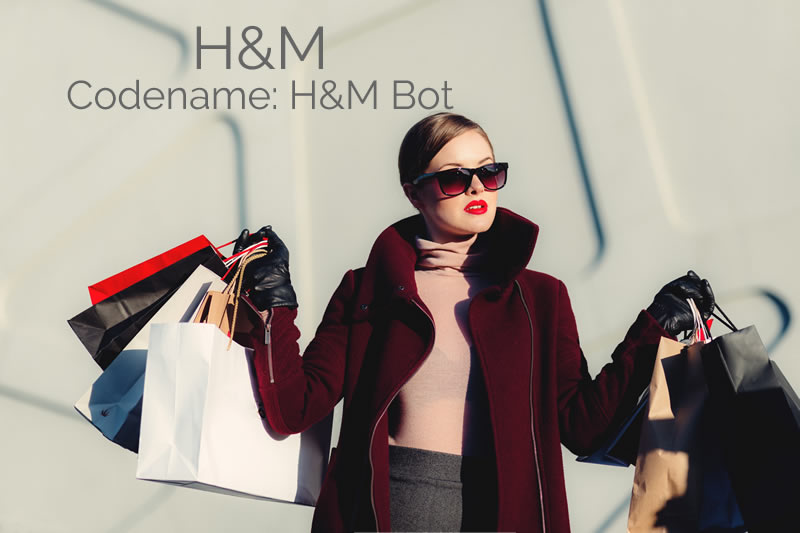Hey Retail - The future is already here - so how can you be on the distribution list?
So you may have heard this famous quote by William Gibson: ‘the future is already here — it’s just not very evenly distributed’ And 25 years later, it It is still applies to small and large businesses when compared side by side in the world of AI.

So you may have heard this famous quote by science fiction writer William Gibson:
‘the future is already here — it’s just not very evenly distributed’
And 25 years later, it It is still quietly prophetic and applies to small and large businesses when compared side by side in the world of AI.
The good news however, is that the difference is not all budget related, but is mainly an educational barrier, as new technology is now becoming available to smaller budgets. This now allows cost-effective and exciting innovations in an organisation that would normally miss out.
So what are the big guns doing and how do you get in on it?
1-800 flowers

These guys are based in the US and but were one of the first movers in the retail sector to produce their own conversational chatbot
Called GWYN, the chatbot Is based on IBM Watson’s platform, the purpose for this bot is to provide consumers the opportunity to search and order gifts online but as a conversational engine and interface. The key point to understand is that GWYN becomes smarter and able to deal with more complicated customer enquiries as she interacts with them. Smart right! So as GWYN gets better and learns more about her customers, she provides a very customised shopping experience, based on the user's past behaviour and preferences. Very smart...
So using natural language, GWYN can interpret questions about a product or service and then follow up with some additional queries about who the gift is for, what type of occasion and similar queries that build up the story with the customer.
The commercial success of this chatbot is quite sensitive, but there was a statement by CEO Chris McCann, talking about the fact that success of e-commerce growth was reflected by the success of the initiatives that were implemented to enhance performance. Also there were also some additional insights from CB Insights, finding that 70% of customers that ordered through the chatbot were new to 1 800 flowers..
H&M

H&M the fashion retailer again has a personal shopper that is providing great results from mobile users by learning your style from images. This started on KIK in Canada and is supporting their expansion into other countries from reading between the lines.
This a particularly smart application that can suggest outfits and others if you do not like it’s initial idea.
Slightly disappointingly, the options from the chat are to bounce to the site to purchase, rather than giving the option of buying there and then. In a recent survey 47% would buy items from a trusted chatbot on social.
They do have some other neat stuff, like sharing the whole outfit via the social networks or email etc.
As intimated earlier the business expanded into another 11 markets online giving them and estimated 35 in total by the end of 2017. This move is supported by the roll-out of the chatbot and is a great example of engaging with the younger audiences in different channels that are mostly on mobile devices.
Uber

Clearly it is not a great surprise that Uber would be all over this and they are. Their push was into Facebook Messenger, interesting as they are not interested in taking space on people’s devices they have over 40m active users every month anyway.
They already have a great and slick experience with the app and it looks like the addition to messenger is just to avoid any issues if someone is living in Facebook.
And ok not really a retailer but they are still a strong buying experience that translates across sectors.
I don’t have any data on the success of this for Uber, but with increasing pressure in their space, they are just making it easier than an easy thing to get across town. If they continue to do that then they circumvent all the press as consumers just love convenience and a slick service….end.
Taco Bell

These guys are obviously taking advantage of the US surge in first adoption of this technology and have their bot integrated into Slack. This allows the customer to order from within the Slack app and from the initial enquiry right through to the sale, so a very useful use case for this type of food retail space.
They worked on adding a little character to the bot and allowing some further conversation routes, but the main journey was through the controlled sales process.
Now this makes it much easier to deploy and control as you are leading the customer, bar managing some simple queries, as you can see from the little animation, they also provide useful tips on what to ask for.
We could not see sight of this in the UK, so they look to only have this in the US - they have 25 locations in the UK, but their brand and the Slack usage may not be powerful enough to worry about this market yet.
Sephora

Sephora has a style suggestion bot that allows you to pick and choose your best look based on understanding your skin tones and give simple access to information like tutorial videos and the like. This is a pretty simple application but it is super powerful and allows Sephora to get great use from their assets, in the above example it is a video on the lips.
Again, this example is just making it easy for the customer to get information whenever they want it and in an accessible way that works for them - this example is spun up in Kik that is aimed at Millenials and the like but that fits that audience. It starts off pretty prescriptively but can follow some different routes after it is on its way.
Overall this is a great marketing tool and follows the influencer routes for their audience.
So how do you get in on the action?
So how does this help use for small business? Of course that investment from the likes of 1-800 flowers was significant and it would be take some time to replicate this in a smaller business environment, but that does not mean that a small business has to take this on.
Some clear use cases for a retailer can be clearly to provide a personal shoppers for your own e-commerce. It doesn't have to be as sophisticated as the 1-800 example, but your business could start stepping towards this with some of the key features and mimic some of the simpler elements from the corporate and large brand examples.
These could include:
- Simple assistive suggestions based around your own related products offer
- Integrated faq sections from your site to cover of questions during the buying process
- Initial seeding of a behaviour database based on the customers that can be used later
These are powerful but actually relatively simple options and actually make a huge impact to a sales process, allowing quality responses and assistance, without the intervention of a human. Looking at these examples you are setting up your framework and when you are doing stuff like capturing behavioural data, uo have the opportunity to allow your application to grow around this initial frameworks, avoiding the risk of a legacy.
So to be clear they are all great examples, but they are simply using the same core technology that is now within reach for a small or medium retailer. The big cost has already been picked up by the large businesses, they had first mover advantage which as a large brand his name is powerful and clearly worth the effort.












